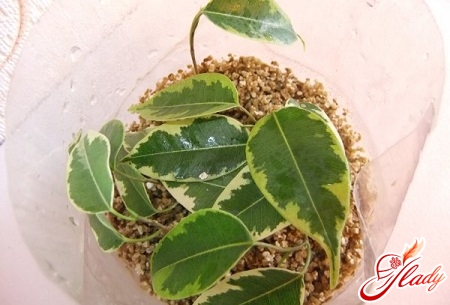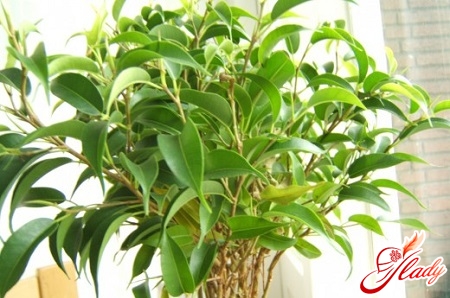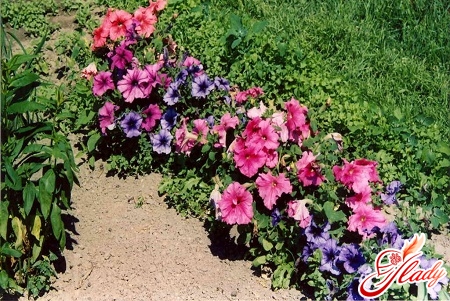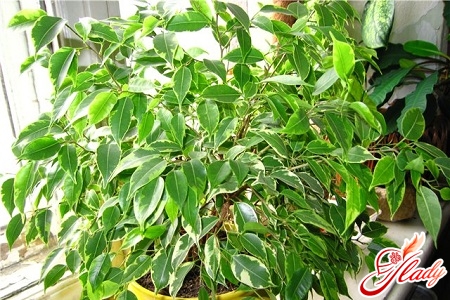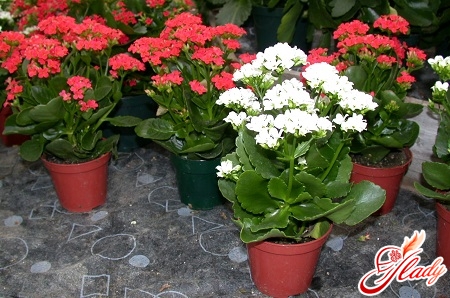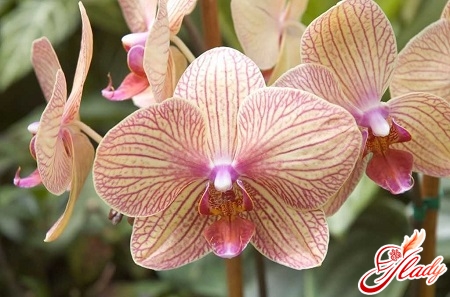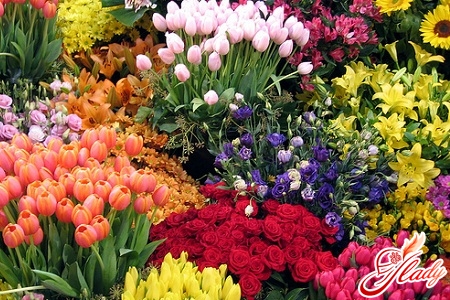 There are never too many flowers in the garden!Until recently, it seemed that having created a charming flowerbed, mixborder, gravel flowerbed or hill, nothing better could be imagined. But time passes, new fresh ideas come to you, interesting varieties appear, and your flowerbed no longer seems as ideal to you as before. You have a desire to add something to it, to reconstruct it, to correct some strokes and mistakes. Spring is the best time to plan well and think over the necessary changes for the next season. Creating flowerbeds on the site is a long and difficult matter.
There are never too many flowers in the garden!Until recently, it seemed that having created a charming flowerbed, mixborder, gravel flowerbed or hill, nothing better could be imagined. But time passes, new fresh ideas come to you, interesting varieties appear, and your flowerbed no longer seems as ideal to you as before. You have a desire to add something to it, to reconstruct it, to correct some strokes and mistakes. Spring is the best time to plan well and think over the necessary changes for the next season. Creating flowerbeds on the site is a long and difficult matter.
Design: Let's start with the rules
There are many factors to consider in order toit became harmonious. And this does not always happen right away. One of the main rules when creating a flower arrangement is the selection of plants by height. In a flower bed or mixborder, low species should be planted closer to the lawn or path, and along the edge of the flowerbed. Medium-sized ones are located in the middle, the tallest ones take a place in the background, and in the flowerbed - in the center. In a flowerbed, plants are most often planted in a geometric pattern. In a mixborder, in order for the flowerbed to look natural, plants of the desired height should be arranged not "along a ruler", but by shifting some of them a little. Or whole groups of plants are shifted towards lower or higher ones. There are other important factors when forming a flowerbed, for example, the color of leaves or flowers. Here, only your taste, desire or mood matters. But in addition, there are certain laws of harmony that dictate which colors go well with each other and which do not. You can create a composition in one color - it will look interesting: white, pink, blue flower beds and even the whole garden. A composition that uses different shades of one color will look great: two- or three-color or polychrome, variegated. The flowering time of different plants and its duration are no less important. For flower beds, borders, rabatki, you need to select either long-flowering or decorative-leaved plants or, as flower growers call them, consistently decorative. In mixborders, the rule is different: here, plants are selected so that they, replacing each other, bloom at different times and so that from early spring to late autumn there are constantly flowering plants in the composition. It is not so easy to create such a harmonious flower bed. Therefore, in order to achieve the desired result, plants have to be changed more than once.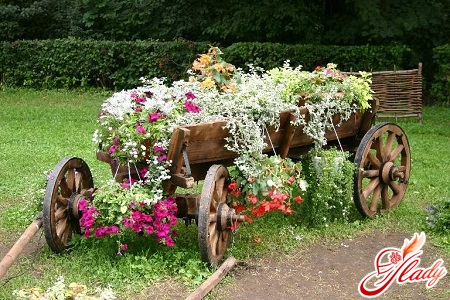
Annuals: add brightness
Add color, brightness, and every yearYou can change the appearance of your flowerbed with the help of annual plants, or annuals. Most often, they are used to decorate flowerbeds, borders, flower beds and carpet flowerbeds. In rockeries and mixborders, special “pockets” are left for them or places that are freed up after digging up bulbous flowers and some types of biennials are used. Annuals are presented in a very wide range - from miniature lobelia and lobularia to such “large-sized” plants as kochia, castor oil plant, cleome and perilla. There are so many species that you can choose them for any style and type of flowerbed, be it a mixborder in a natural, natural style or a parterre flowerbed. And the endless variety of plants in color, external structure, shape of flowers and inflorescences, as well as leaves will give you the opportunity to change the appearance of your flowerbed every year, adding new colors to it. Annual plants are planted in a flower bed in summer or spring, but the place for them can and should be prepared in the fall. In October, clear the flower beds of annuals that have lost their decorative value or died. Add compost or humus to the soil, a little potassium and phosphorus fertilizers, and if the soil is acidic, then dolomite flour or lime. The soil should be dug up to the full depth of a shovel, turning the fertilizers down. There is no need to break up and cultivate the lumps - the soil for the winter should go away with a lumpy, uneven surface. In the spring, when the soil dries out and warms up enough, it needs to be dug up again, adding complex or nitrogen fertilizers. Now the soil needs to be cultivated, and when the right time comes, favorable for planting this or that plant, begin to plant annuals.
Curbs: five reasons to create them
Borders are needed around flower beds. There are several reasons for this:
- border prevents the penetration of grass into the flower garden from the lawn and weeds from the site;
- thanks to the curb from the flower beds will not "run away" decorative quickly growing plants, growing into a bush or into the lawn;
- when loosening the ground and watering the flower bed, the border prevents the soil from falling onto the paths;
- with the help of a curb you can effectively change the relief and shape of the flower garden;
- well, and most importantly: neatly edged crocheted flower beds look much more attractive and tidy.
So, if you didn’t have any flower beds around you,borders, it is not too late to fix everything. And autumn or spring is the best time for this. When creating a border, you can use a variety of materials - paving slabs, bricks, asbestos strips. But garden centers sell special plastic strips that are most convenient for these purposes. They can be of different sizes, thicknesses, colors, smooth or corrugated, in general, for every taste and need. Such strips need to be dug in vertically along the perimeter of the plantings. The upper edge should protrude slightly, a couple of centimeters, above the soil surface. With the help of these strips, you can divide the flowerbed itself into sectors in which different types of plants are planted. In addition, borders will help to effectively change the relief of the flowerbed, raising different sectors relative to others. You can also create a natural border. There are special types of plants for this purpose. Stable ornamental crops, low and medium-sized, which grow poorly, are most suitable for this. Border plants should be planted taking into account their lighting requirements. Both annual and perennial crops are suitable for these purposes. A border made up of one compact low-growing species looks very good. A well-chosen border can give a flowerbed a finished look. A flower frame will decorate even a far from ideal composition.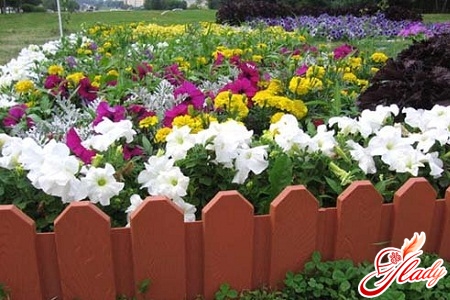
Limiting the spread of invasive plants
When creating a flower bed, you need to know how muchdifferent types of plants can coexist for a long time. Aggressive, fast-growing annuals are not recommended for use in mixborders: they crowd out other crops, often changing the flowerbed for the worse. There are plants that have long rhizomes that spread in all directions, so just cutting off the shoots is not enough. They grow back very quickly. It is also not so easy to dig up the “scattered” shoots. They often grow into other plants, and it can be very difficult to separate them. Therefore, when planting cypress spurge, dotted loosestrife, yarrow, reed canary grass, wood anemone, miscanthus sacchariflorus, large manna grass and other similar plants in a flowerbed, it is imperative to limit their growth zone. This can be done by digging a metal or plastic tape into the soil around the perimeter to a depth of at least thirty centimeters. It is even easier to plant plants in a spacious container with large holes in it or without a bottom at all, digging it into the necessary place of the flower bed so that the upper edge protrudes slightly above the soil surface.
Bulbous: a change of scenery
The creation of a bulbous flower bed begins withmid-August, planting small-bulb and bulbous plants from this time until mid-October. Such of them as daffodils, muscari, fritillaries, scillas can grow without transplanting and digging for many years. Tulip varieties from the Greig, Botanical and Kaufman groups are not dug up for four to five years. Such species are planted in rows or groups among perennials. Tulip varieties that require annual digging can be planted in special cassettes that have large holes in the bottom. This facilitates the process of digging up the plants. Such dug cassettes with bulbous plants are dug in the garden before the foliage turns yellow, obtaining high-quality bulbs that can bloom the following year.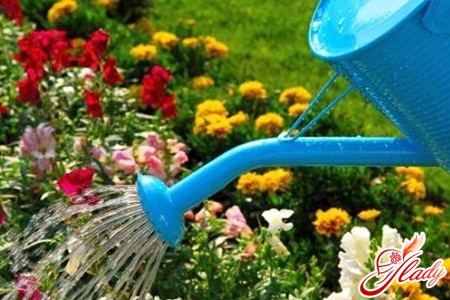
Different sides of the same flower garden
When creating a flower bed, you need to focus onplants that are decorative throughout the season: annuals blooming from summer to autumn, cereals and conifers that give the flowerbed structure. You can add small architectural forms - flowerpots or statues that will create the character of the composition or a certain mood. Such a flowerbed can become a link that will unite different parts of the garden. Let's consider some techniques of flower design when creating flowerbeds of various compositions. "Angel's White" In such a composition, the flowerbed is made in a spectacular white range. In the spring, you will be pleased with the "foaming" flowering border of creeping tenacious and saxifrage, and a little later, the horned violet, blooming all summer, will "ripen". This is a rare variety, so it can be replaced, depending on desire, with another. A little later, the simple-leaved astilbe will open its snow-white inflorescences. Then the blooming white wave will be picked up by the petunia. After that, the white caps of the inflorescences will be spread by a luxurious hydrangea. "Gold of Nuance" This composition is built, as the name suggests, on the nuance of yellow-golden tones. In it, from June until frost, perennial coreopsis will delight with long flowering. Tagetes echoes it with bright yellow flowers. Barberry will add spectacular coloring - with strokes on or light spots on the green leaves. It is good because it steadfastly tolerates adverse conditions. To design the composition, the bush should be trimmed, giving it a rounded shape. Well, the main accent of the composition, which will incredibly decorate it, will be juniper medium (Old Gold). "Changes" And you can abundantly use annuals along with perennials to design the composition, which gives ample scope for updating the flowerbed annually. This includes coleus, and ampelous form of garden petunia, and kochia. All these plants are unpretentious, except that the hybrid coleus requires a sunny place for the brightness of its color, so allocate an open place for this part of the flowerbed.
Recommendations
Planning and re-planning a flower bed requires a careful approach. It is important to consider a variety of factors, both aesthetic and botanical, to correct mistakes made and not to make new ones.
- Make a list of all the shortcomings that you would like to change in the flower garden and analyze the reasons why it was not decorative enough.
- Mark the dead plants in the list and identify possible causes of their death.
- Write a list of plants that you would like to see in your flower garden, taking into account the ecology of your site.
- Analyze how new plants fit into the existing flower garden, based on the size, the flowering period and the type of foliage.
We recommend reading:




